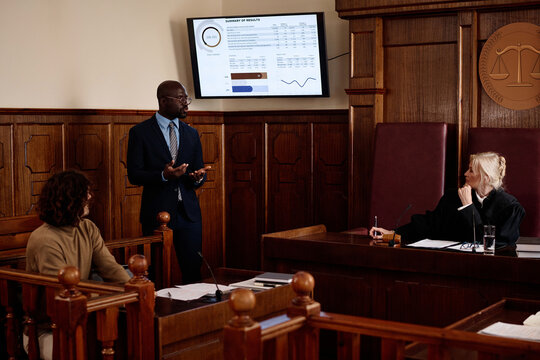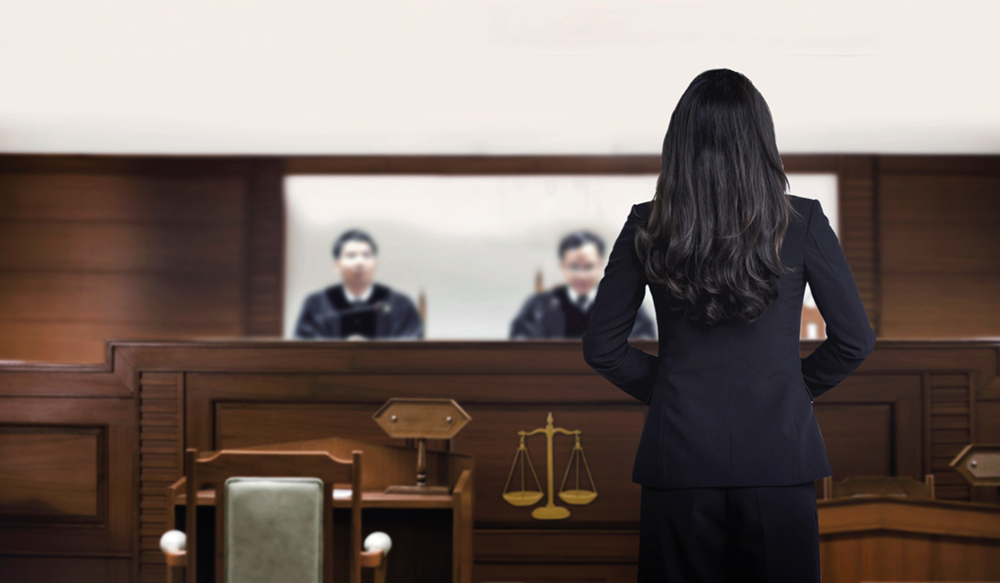Navigating Facility Cases: Just How to Develop Reliable Trial Presentations for Optimal Results
Navigating Facility Cases: Just How to Develop Reliable Trial Presentations for Optimal Results
Blog Article
Browsing the Complexities of Test Presentations: Tips for Seamless Distribution and Engaging Disagreements
In the realm of lawful proceedings, the art of test presentation stands as a critical determinant of success. As attorneys navigate the detailed internet of courtroom dynamics, the capability to seamlessly deliver debates and proof while astounding the court's attention becomes extremely important. The intricacies intrinsic in test presentations need a fragile balance of technique, skill, and finesse. By developing strategies that make sure a sleek distribution and crafting engaging disagreements that resonate with the audience, lawyers can substantially boost their campaigning for. In a globe where persuasion preponderates, mastering the ins and outs of test discussions is not merely a choice but a requirement for those seeking to prevail in the court room.

Comprehending Trial Objectives
To effectively browse a trial, it is essential to have a clear understanding of the objectives that require to be achieved. Before tipping right into the courtroom, legal groups have to specify their objectives and desired end results. These goals function as leading principles throughout the trial, shaping strategies and influencing decision-making processes.
Understanding test objectives entails a comprehensive analysis of the instance, lawful criteria, and the client's benefits. Trial Presentations. It requires a precise assessment of the facts, recognizing key concerns, and anticipating potential obstacles. By establishing measurable and specific objectives, lawyers can customize their discussions and arguments to align with the preferred results
In addition, a clear grip of test objectives allows legal groups to prioritize evidence, witnesses, and legal debates successfully. It permits for the advancement of a systematic story that reverberates with the court and court, reinforcing the general situation presentation.

Organizing Proof Successfully
Having a clear understanding of trial objectives lays the foundation for arranging evidence successfully in legal process - Trial Presentations. By lining up the discussion of evidence with the desired end results of the trial, legal groups can enhance their disagreements and boost their persuasiveness. One critical element of arranging proof is classification. Organizing evidence based on motifs or importance to particular lawful aspects can aid streamline the presentation and make intricate info more absorbable for the court or jury.
Another key element in organizing proof successfully is developing a logical flow. Offering evidence in a consecutive and systematic fashion can aid build a compelling narrative that supports the lawful debates being made. In addition, making use of aesthetic aids such as charts, timelines, or graphs can further enhance the organization of evidence and assist in clearing up complicated connections or sequences of events.
Moreover, guaranteeing that all evidence offered is permissible and pertinent to the case is important. Irrelevant or inadmissible proof can detract from the toughness of the disagreement and potentially damage the reputation of the here and now party. A careful review and selection procedure ought to be carried out to consist of only the most impactful and legitimately sound proof in the trial discussion.
Crafting Influential Stories
Crafting engaging stories plays a pivotal role in presenting influential disagreements throughout legal procedures. A well-crafted narrative has the power to mesmerize the target market, evoke feelings, and ultimately sway the choice for the here and now party. When building a story for a trial presentation, it is important to establish a clear storyline that highlights bottom lines and attaches them in a systematic manner. Begin by outlining the realities of the situation in an engaging way, making sure that the series of events is simple to adhere to. Present characters properly, offering history info that assists the target market understand their actions and motivations. Additionally, including dazzling descriptions and interesting language can bring the narrative to life, making it more unforgettable for the discretionary. By weaving with each other evidence, testament, and legal disagreements right into a natural and influential narrative, legal experts can effectively promote for their clients and increase the likelihood helpful resources of a favorable end result in the court.
Understanding Visual Aids
Efficient use aesthetic help is vital to boosting the influence and clearness of test discussions. Aesthetic help, when used purposefully, have the power to simplify complicated information, enhance key points, and leave a long-term perception on the discretionary. To understand aesthetic help in test discussions, it is important to make sure that they are clear, concise, and appropriate to the arguments being made.
When including visual aids, such as charts, timelines, graphs, or pictures, into a test discussion, it is important to maintain them visually appealing yet expert. The visuals should enhance the verbal disagreements, offering a graph of the information being discussed without overwhelming the target market with unneeded details.
Moreover, exercising with the aesthetic help beforehand is important to make sure a smooth shipment during the test. Familiarizing oneself with the web content, transitions, and timings of each visual aid can aid preserve the flow of the presentation and avoid technical problems that may occur.
Providing Impactful Closing Disagreements
An engaging closing disagreement works as the culmination of a trial discussion, enveloping the core story and convincing the discretionary in the direction of a beneficial choice. To supply an impactful closing disagreement, it is crucial to succinctly summarize bottom lines, highlight the toughness of your instance, and attend to any type of weak points in a tactical manner. Begin by detailing the primary arguments that sustain your customer's setting, emphasizing why the proof provided throughout the test sustains your story. It is necessary to develop a sense of communication and clarity, assisting the court and jury in the direction of the wanted conclusion.
In addition, incorporating sob story can additionally reinforce your closing debate. By attaching and humanizing the case on a personal level with the decision-makers, you can evoke empathy and understanding, affecting their assumption of the realities browse around this site offered. Additionally, restating the lawful requirements that must be satisfied for a beneficial ruling can reinforce the validity of your setting. Inevitably, a well-crafted closing argument should leave a lasting impact, compelling the discretionary to rule in your customer's support.
Conclusion
To conclude, mastering trial discussions includes recognizing purposes, arranging click to read evidence, crafting stories, utilizing aesthetic aids, and delivering impactful closing arguments. By executing these strategies properly, lawyers can present their instance perfectly and make compelling disagreements in the courtroom. It is critical to navigate the complexities of trial discussions with accuracy and skill to achieve success in legal proceedings.
By straightening the presentation of evidence with the wanted results of the test, lawful groups can enhance their debates and enhance their persuasiveness (Trial Presentations). To grasp visual help in trial discussions, it is vital to ensure that they are clear, concise, and appropriate to the arguments being made
An engaging closing disagreement serves as the end result of a trial presentation, encapsulating the core narrative and persuading the court and court towards a desirable choice. Begin by laying out the primary debates that support your customer's position, highlighting why the proof offered throughout the trial supports your story.In verdict, understanding trial discussions includes recognizing goals, arranging evidence, crafting narratives, using aesthetic help, and delivering impactful closing arguments.
Report this page